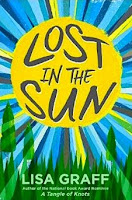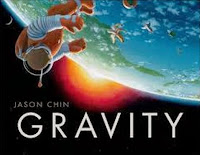
What I Read this Week:
(Simon & Schuster Books for Young Readers, June 16, 2015)
Ruby is grappling with a secret she keeps: her mom is incarcerated. This complicates everything for the 11-year old, but especially friendship. One summer, Ruby meets Maraglit and is filled with so much hope for her new friendship that she has to consider abandoning the rules she has always played by to keep her mom a secret.
Ruby on the Outside will appeal to readers who are drawn to realistic fiction as a means of experiencing another person's world. Readers develop empathy for Ruby through the conflict between the inside and the outside. Ruby's raw and difficult questions and emotions around loss, abandonment, self-worth, and normalcy rest on the reader's heart, making her a character you want to reassure and protect and love.
Ruby is grappling with a secret she keeps: her mom is incarcerated. This complicates everything for the 11-year old, but especially friendship. One summer, Ruby meets Maraglit and is filled with so much hope for her new friendship that she has to consider abandoning the rules she has always played by to keep her mom a secret.
Ruby on the Outside will appeal to readers who are drawn to realistic fiction as a means of experiencing another person's world. Readers develop empathy for Ruby through the conflict between the inside and the outside. Ruby's raw and difficult questions and emotions around loss, abandonment, self-worth, and normalcy rest on the reader's heart, making her a character you want to reassure and protect and love.
(HMH Books for Young Readers, August 4, 2015)
Drowned City is an informational text about the devastation and horror faced by New Orleans during and after Hurricane Katrina. Written and illustrated in graphic novel format, Don Brown's book adds variety to the growing text set of books set during this same historical event (Zane and the Hurricane, Upside-down in the Middle of Nowhere, Marvelous Cornelius, etc.) Drowned City reads like a play-by-play of the sequence of events, and tension and emotion build as time passes and the severity of the situation compounds. Brown is honest and real in his writing, but even the most difficult truths of Hurricane Katrina (looting, disease, death) are presented in a tactful, middle-grade appropriate way.
(Graphix, August 25, 2015)
Sunny has looked forward to vacationing in Florida and has grand plans when she visits her grandfather for the summer. However, with the help of flashbacks, the reader realizes Sunny's visit is a temporary relocation while the family grapples with her brother's drug abuse.
The Holm's graphic novel memoir will likely be among the most circulated books in my classroom this year. Readers will scoop it up because it is a new, full-color graphic novel, and I hope will linger in the greater messages of the story for longer. Sunny Side Up opens the door for conversations about oppression from drug abuse and other family "secrets," letting readers know they don't have to feel alone.
(Sterling, September 1, 2015)
When the breakfast duo of Lady Pancake and Sir French Toast discover there is only one drop of syrup left in the bottle, a wild adventure ensues as they both race to be the victor.
The illustrations are bright and playful. The rhyming text of this picture book race is creative and entrancing. Filled with puns and rich word choice, readers will smile their way through the page turns to find out the results. Warning: results may be unpredictable.
(Heinemann, 20o5)
In a collection of stories from her teaching life, Penny Kittle invites readers to consider what is truly important in the teaching profession. Her true stories evoke laughter, lots of head nodding, and tears at times, too. This is a renewing read, one that encourages our teacher hearts to hold fast to what really matters in our work with learners and reminds us that our work every day is a gift.
Shadows of Sherwood, by Kekla Magoon
What I am Reading Next (in no particular order):The Mostly True Adventures of Homer P. Figg, by Rodman Philbrick
Death by Toilet Paper, by Donna Gephart
A Night Divided, by Jennifer Nielsen









































